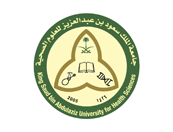Abstract
Problem: Altruism is often included in classical and modern definitions of medical professionalism and some feel that medicine is a vocation where altruism is a pre-requisite. However since the 1970s there have been changes in society affecting the way all professions are viewed. Some high profile medical malpractice cases mean the public no longer perceives the medical profession as infallible. Following the Harold Shipman case, medical educators began to argue that retaining the concept of altruism did a disservice to the medical profession where “it is the claim of altruism that allows the medical profession to claim moral superiority”. 1 Approach: The historical course of medical professionalism was examined looking at changes in the way the profession viewed itself and how doctors were regarded by the public. It drew on the socio-cultural changes of the latter half of the twentieth century as well as the rise in medical malpractice cases to show how these have influenced professional values. Changes to the medical profession following the case of Harold Shipman were highlighted with the current usage of the term altruism by members of the profession. Outcomes: Arguments both for and against retaining altruism in the definition of medical professionalism were discussed. Ethicists argued that following the moral code of beneficence in the course of medical practice, it was not possible to be altruistic and many feel that receiving a fee for services can never allow for true altruism. There is an argument that working without consideration for one's own well-being may lead to an increase in burn-out in the medical profession. Next steps: For many, the future of the medical profession lies in abandoning altruism as part of its defining qualities and adopting a new ethical definition of professionalism that fits with the complexities of modern society
Recommended Citation
Harris, Joanne
(2018)
"Altruism: Should it be Included as an Attribute of Medical Professionalism?,"
Health Professions Education: Vol. 4:
Iss.
1, Article 2.
DOI: 10.1016/j.hpe.2017.02.005
Available at:
https://hpe.researchcommons.org/journal/vol4/iss1/2



